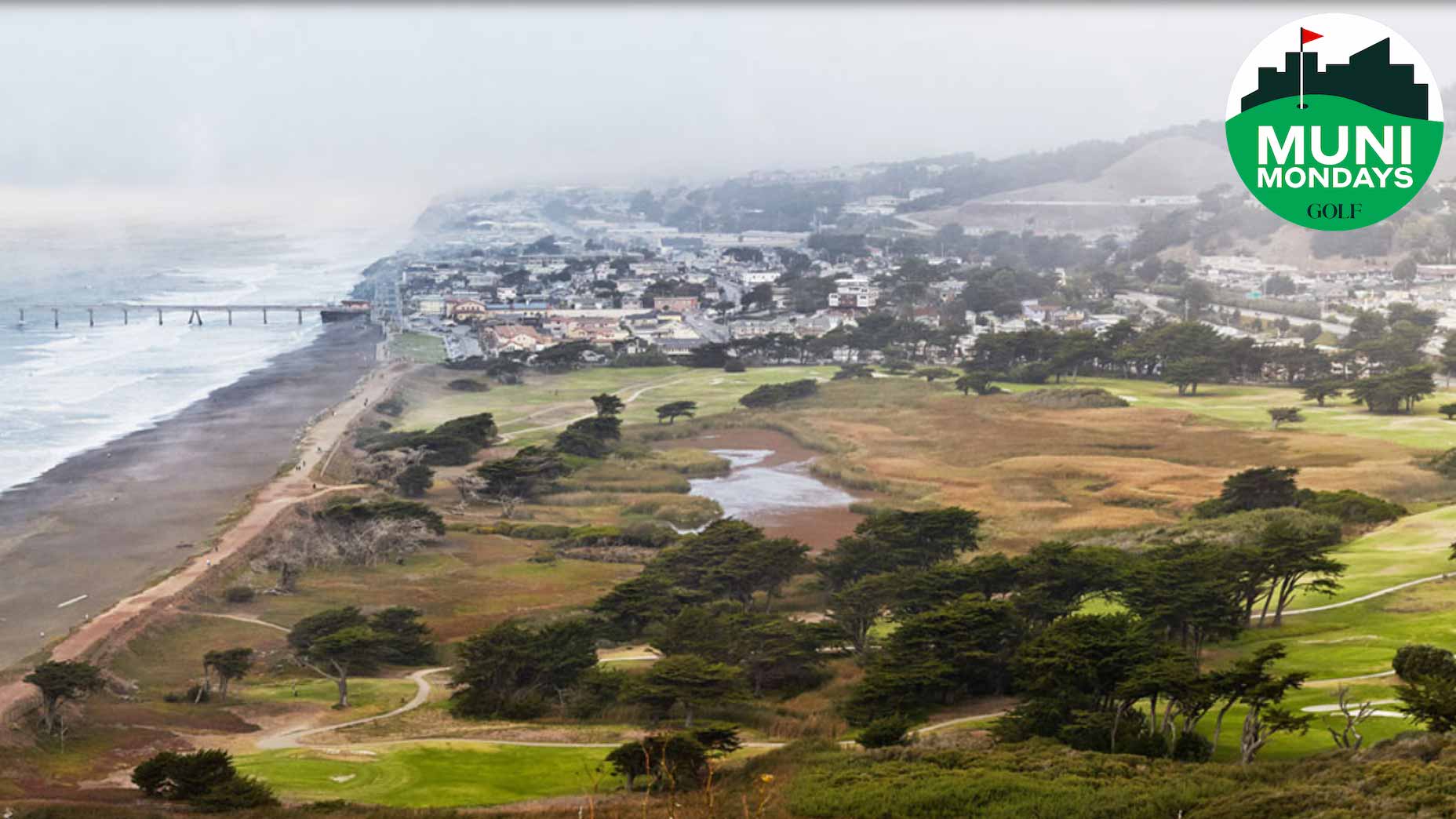Is this Canadian course North America’s greatest muni?

Ocean views are just part of the spectacle at Cape Breton Highlands Links
Golf Club Atlas
In the summer of 2012, after a six-hour flight to Halifax and a three-hour drive to Cape Breton Island, I turned up at newly opened Cabot Links, in Nova Scotia, only to be told by the property’s co-owner that he hoped I’d soon be going somewhere else.
Not that Ben Cowan-Dewar wasn’t also keen to show me what he’d help create at Cabot.
But as an architecture junkie and a proselytizer for fine design, he insisted that I drive another 90 minutes to a course in which he had no financial interest.
“If you love golf,” he said, “you can’t come all this way and not see Highlands Links.”
Situated on the north edge of Cape Breton, pinched by the Atlantic and the Gulf of St. Lawrence, Cape Breton Highlands Links is the work of Stanley Thompson, Canada’s answer to Alister Mackenzie. Over the span of a flamboyant, four-decade career that was cut short by his death by aneurysm, at 59, Thompson left an imprint around the Americas, but nowhere more vividly than in his home country. His most acclaimed courses— Banff Springs, Jasper Park Lodge, Capilano, St. George’s and Highlands Links, all completed in the 1920s and ‘30s — have been called his ‘Big 5’, and while reasonable people might disagree which of that quintet deserves top billing, many of those people believe the honor belongs to Highlands Links.

The Canadian golf architect Ian Andrew, author of the Thompson biography “In Every Genius There’s a Bit of Madness”, goes further in his praise. He considers Highlands Links the best design in Canada.
Like Banff and Jasper, the course sits in a national park and seizes on the spectacle of its surroundings. Its opening hole, an uphill par-4 with a wide and wildly rumpled fairway, is like the slow ascent of a rollercoaster: the buildup to an exhilarating ride. Really, though, it’s best to hoof it; the walk at Highlands Links is as beautiful as any in the game.
For the first six holes, the routing works toward and along the water, then ducks into the woods before dropping into a river valley for a memorable stretch that includes an idiosyncratic interlude: a nearly 500-yard walk between the 12th green and 13th tee. I’ve heard some golfers grouse about this gap. But if anything, the shady stroll down a path that parallels a creek is a chance to get your daily dose of Zen.
In the years since my first visit, I’ve returned to Highlands Links on several occasions and re-looped the course countless times in my mind. I’ve also watched and re-watched a match between the Canadian greats George Knudson and Al Balding that was played at Highlands Links in 1965 as part of the TV series, Shell’s Wonderful World of Golf. The grainy footage, which endures on YouTube, is worth an hour of your time. Along with wide-angle and close-up views of Highlands Links, the episode features color commentary from a tweed-clad Gene Sarazen, articulating his lines like a Method actor while describing the nuances of the design. Thompson, Sarazen notes, “didn’t spare the horses when building bunkers” at Highlands Links. Nor did he leave many flat lies in the fairways, which, Sarazen points out, “pitch and roll like the deck of a battleship.”
How much pitch and roll you get at Highlands Links has long depended largely on the time of year and what kind of weather has been blowing through. As at many munis, conditions haven’t always done the course great favors. And even ardent lovers of Highlands Links say it often plays too soft for its full glory to shine through. GOLF Magazine architecture editor Ran Morrissett is among those who believe that the course would benefit from aggressive tree removal to clear obstructed views while opening paths for air and sunlight that the turf would need for conditions to live up to the quality of the design.
Once a steady presence on GOLF magazine’s list of Top 100 Courses in the World, Highlands Links dropped gradually in the rankings throughout the aughts before falling off the roster in 2013. Some see it as an emblem of untapped potential.
“Properly presented,” Morrissett says, “I’d put it in my top 25 in the world.”
Meantime, though, the great bones of Stanley Thompson’s work remain. When it first opened for play, in 1938, part of a government-funded program to give a remote region an economic jolt, Highlands Links was a lonely outpost on Cape Breton Island. More recently, of course, Cabot has become the area’s marquee destination. Maybe you’ve got a Cabot trip earmarked for your near future. If you can swing it, do it. But you can’t go all that way without seeing Highlands Links.










